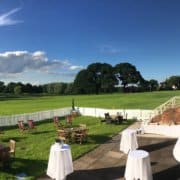Marketing a Private Golf Club From Scratch in Rural Northeast
Case Study
Facility: 18-Hole golf course, practice facilities and fine dining
Location: Northern New England
Ownership: Privately owned by a single individual
Focus: Market positioning, membership sales and establishment of golf operations
About: This was a full golf course design and construction of a brand new exclusive private golf club. The course was built over the top of a failed public golf course on a large beautiful piece of ground. This was a startup project, owned by one man, engaging a high profile golf course architect.
Challenges We Faced:
In the first 2 years, we were charged with many important tasks. We needed to oversee the construction phase of golf course design and development. At the same time, we were charged with selling the owner’s vision of a top-end private club to grow a membership base in anticipation of the grand opening. Selling the vision of an elite private club in rural New Hampshire was not an easy task – particularly with respect to how many locals felt about how previous owners of the public course had treated people. It turned out the prior owners had failed to make payments and deliver on promises, so there was an inherently negative sentiment about the property in local communities.
We also oversaw the renovation of a large rustic barn transitioning into an elegant clubhouse. The owner visited the site on a weekly basis and our team handled the rest, excluding actual construction. The owner also had very specific thoughts about pricing and fee structures for the club, which as it turned out, was not grounded in factual localized data.
As the project opening approached and passed, our challenges shifted toward developing operational procedures and budgets in conjunction with the owner. We hired and trained new staff as things ramped up, but the 2-year process leading up to this point was conducted by just 2 professionals.
Solutions for Marketing a Private Golf Club from Scratch
The process to bring this high-end private club to a successful reality was a long and complicated one. We were out in the community marketing the owner’s vision, building systems for operations, and overseeing all construction and development processes on site
Gorilla Marketing
With such a negative perception of previous ownership, we faced an uphill battle to turn around public opinion. We used education and personal interaction to accomplish this. Simple mailers, emails or impersonal messaging was never going to turn things around.
Instead, we booked open houses, tours of the grounds to curious visitors, and scheduled appointments with every local company, group and program that we could. We presented to local organizations like the Lion’s Club and local Rotary Chapters even though they didn’t necessarily represent our target audience for membership.
Over time, perceptions changed, and people started getting more excited about the owner’s vision for a world class facility…and also about the impact that the club might have on the local community.
Membership Marketing on Piles of Dirt
As golf course construction got under way, it was clear to us that the place would be special. That said, it’s definitely not an easy task to bring that level of excitement and understanding to the casual public. We toured the property when the entire course was just piles of dirt, irrigation pipes and exposed wiring. We’d tell stories, stopping at key points along the way to describe what the architect had in mind and how each hole would play out. We could clearly see that the golf course was going to be a special place.
Simultaneously, we conducted an extremely thorough competitive market analysis as we were determining fee structures. The owner had certain opinions about where pricing levels should be; however, we were able to objectively determine that the local market would not support such high initiations and annual dues. Selling memberships was very slow going until we were able to build trust, achieve buy-in from ownership and reduce fees to a more marketable level.
Ultimately, we all got on the same page and we were off and running. In the 2 years pre-opening, we were able to sell all 150 available memberships – the limit established in the club bylaws.
Finding Top Talent in a Rural Landscape
Early in the process, it was important for us to identify and find the best possible golf course superintendent that we could. The demands for top playing conditions would need to be met with someone with intimate knowledge of local climate, soil conditions, grasses, and equipment from a agronomy standpoint. Also, in terms of our super developing his own trusted team, we needed to find someone well respected with a wide sphere of influence who would themselves be able to bring in top quality staff underneath.
We developed a short list of candidates from nearby clubs and opened discussions. We were extremely fortunate to strike a deal with a local expert superintendent from the public course down the road. He was not only knowledgeable in his craft, but was also very well connected in the local community. Hiring locally for such an important position went a long way toward dispelling public negative perception of this project. No longer was it a “big shot wealthy investor taking over our community”. The narrative became much more accommodating of local people and ways of life. Win-win.
Our new superintendent built his team slowly as they overlooked the grow-in process and prepared for opening day.
A Civil War Era Discovery
As we were continuously patrolling the expansive wooded property, we made an incredible discovery. We found several abandoned old homes with grave sites about ½ mile apart from one another. Luckily, they were undisturbed. It turned out that these homes and sites were part of the Underground Railroad from the Civil War and subsequent emancipation. In one case, we needed to reroute one golf hole so as not to disturb this piece of history.
We operated this club for over 2 years through the grand opening and into the first season of play. This club was voted one of the nation’s best new private clubs in the year that it opened.
Outcome:
Marketing a private golf club in rural New England carries a huge number of challenges. This golf club remains one of the most exclusive, and finest golf destinations in all of Northern New England. It is not part of a housing development of any kind. It’s just a beautiful mountain golf course surrounded by 450 acres of rolling hills and forest. The same owner is in place today and we remain in close contact. In fact, the owner attended KPI Principal, Casey Bourque’s wedding back in 2006.
- How Golf Courses are Leveraging Cheaper Remote Consulting for Success - October 5, 2023
- Top 3 Reasons Why Private Golf Courses are Struggling in 2023 - September 5, 2023
- How to make the most of your prospect lists - May 7, 2019








